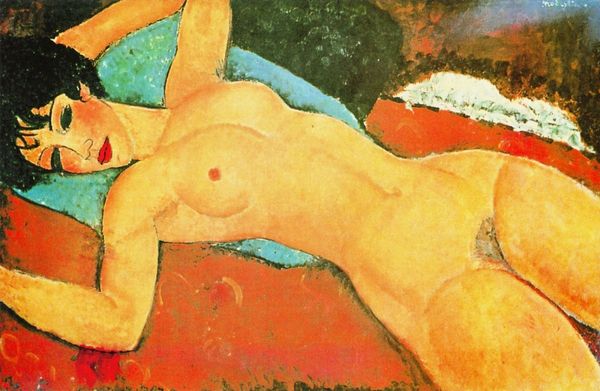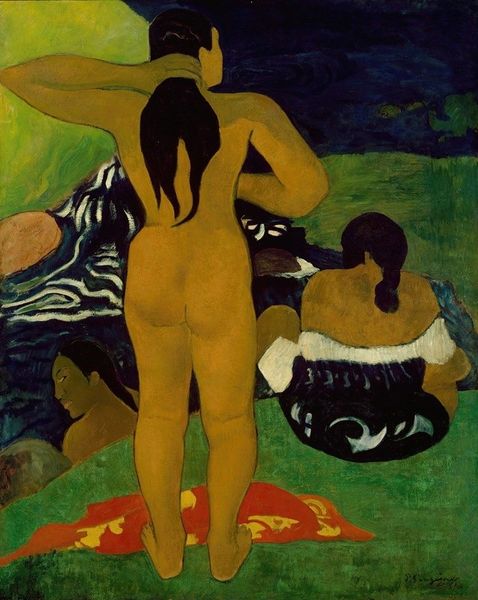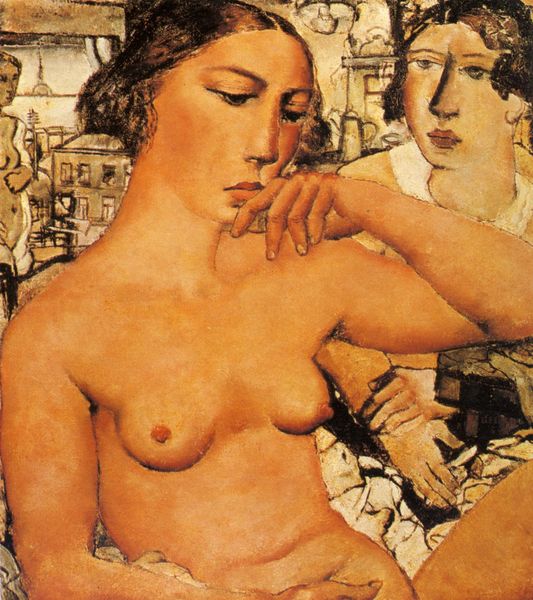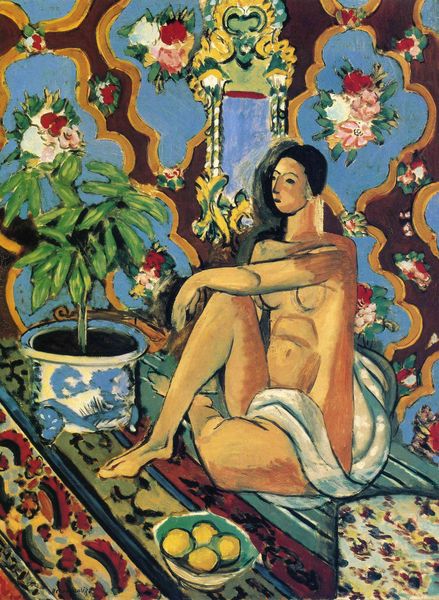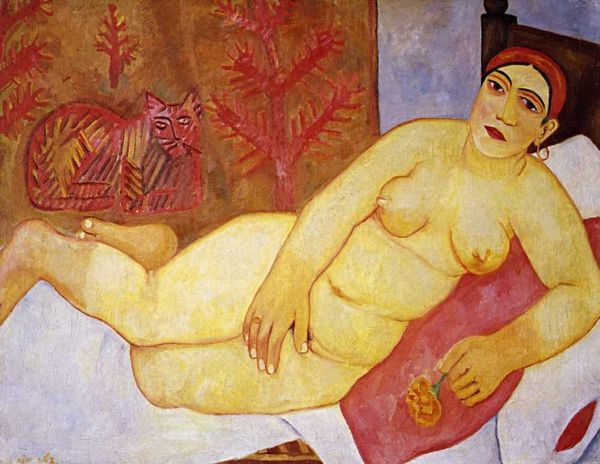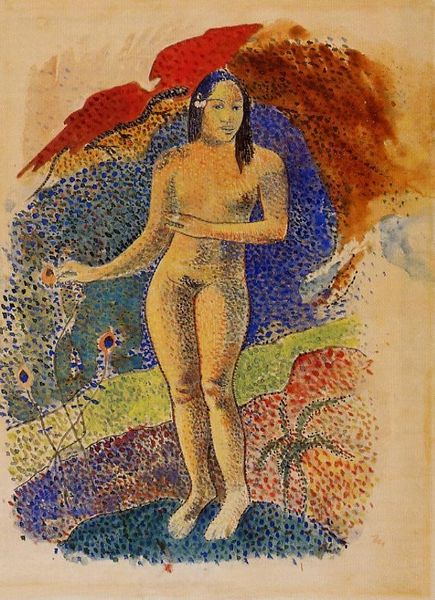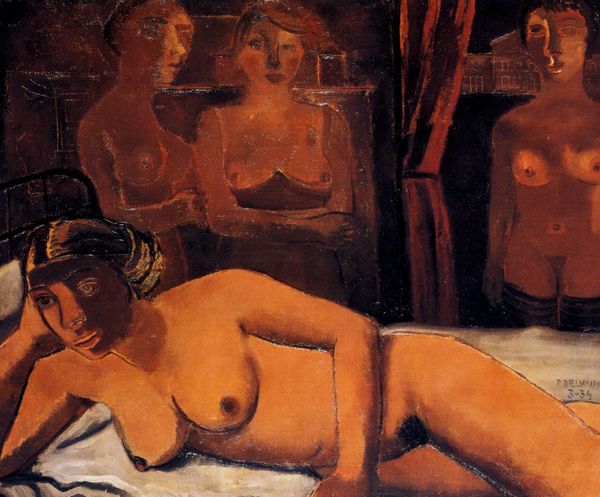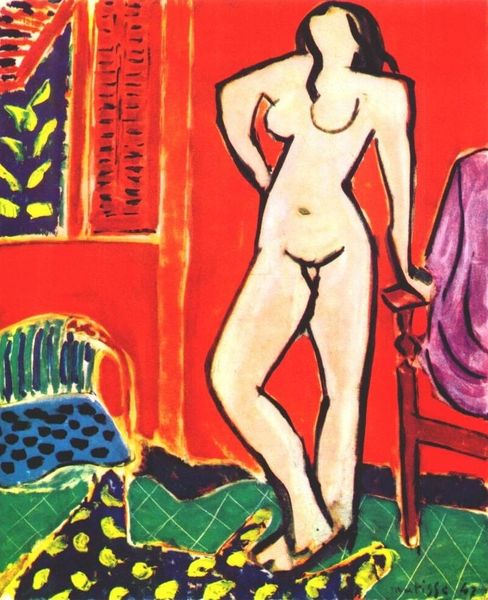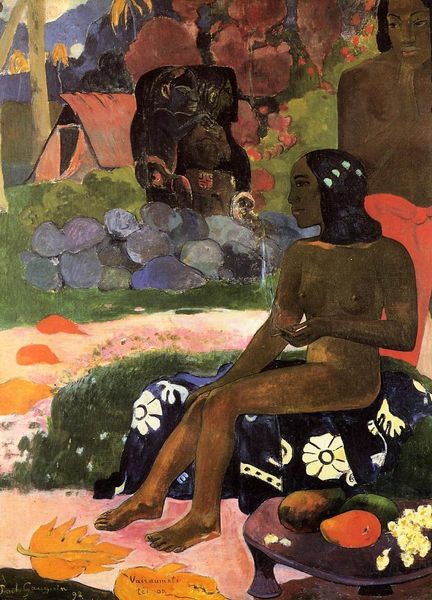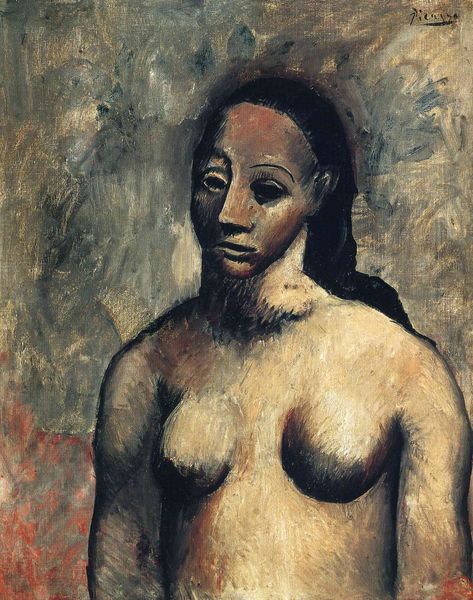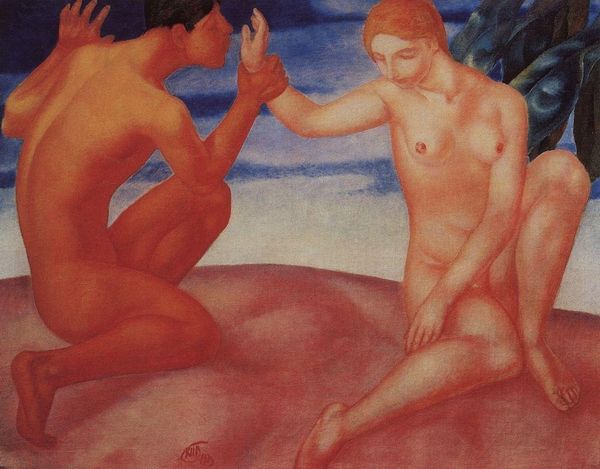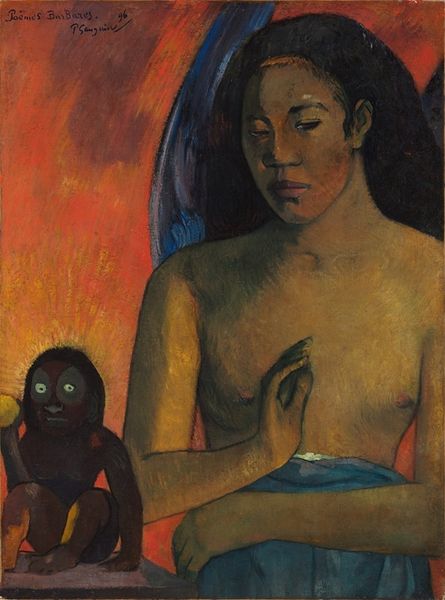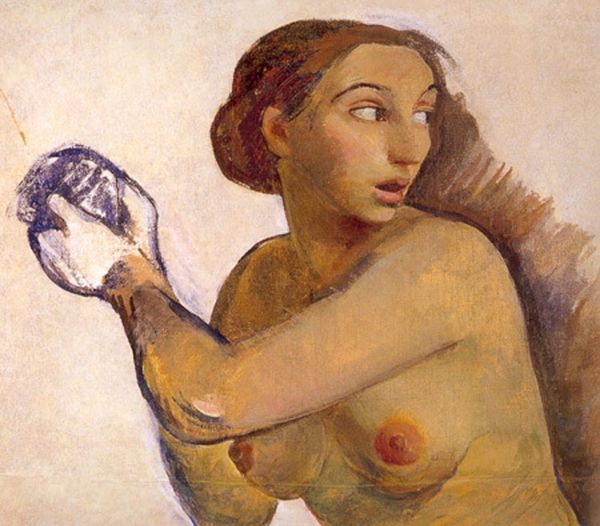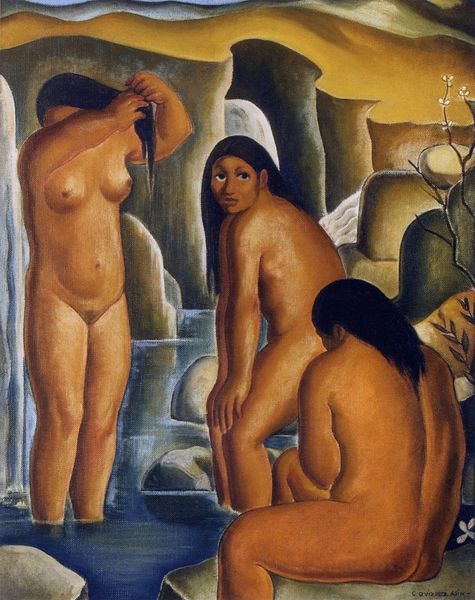
painting, oil-paint
#
portrait
#
painting
#
oil-paint
#
figuration
#
oil painting
#
mythology
#
symbolism
#
post-impressionism
#
nude
#
portrait art
#
erotic-art
Copyright: Public domain
Curator: This is Paul Gauguin's "Vairumati," painted in 1892. The work, rendered in oil paint, is currently housed at the Musée d'Orsay in Paris. Editor: My first impression is of heat. The almost aggressively warm palette feels sun-baked. You can almost feel the rough texture of the canvas through the vibrant pigment. Curator: The subject, Vairumati, was a queen from Tahitian mythology. Note how Gauguin isn't simply depicting a historical figure, but weaving a narrative through visual language. The bird, lizard, and the seated figures in the background serve as complex symbolic indicators of her power, femininity, and the mysteries of Tahitian culture. Editor: It's also impossible to ignore how he built this up layer upon layer, that tangible paint! The rawness counters any romantic idealization, giving you the sense that he wasn’t necessarily invested in polished “perfection.” Curator: That raw quality connects to Gauguin’s larger quest, wouldn’t you say? He's looking for an authenticity he associates with non-Western cultures, trying to access primal emotions and truths he felt were lost in industrialized Europe. Vairumati embodies that longing, becoming a symbol of untouched beauty and ancient wisdom. Editor: The brushwork speaks volumes. Look at how Gauguin handled the flesh, how deliberately rudimentary. It certainly challenges any notions of classical beauty. One begins to appreciate how art like this destabilized old hierarchies, almost using materiality as a weapon. Curator: Indeed, that raw, expressive handling forces us to reconsider how we project our own cultural understanding onto images, doesn’t it? What stories do *we* bring to the surface when viewing “Vairumati?” Editor: It makes you wonder what Gauguin actually saw, and how he interpreted it through his particular colonial lens. Looking closely at those deliberate imperfections is really key. Thanks for drawing my attention to those narratives! Curator: And thank you, it is always enriching to think through what the sheer labor reveals.
Comments
No comments
Be the first to comment and join the conversation on the ultimate creative platform.
